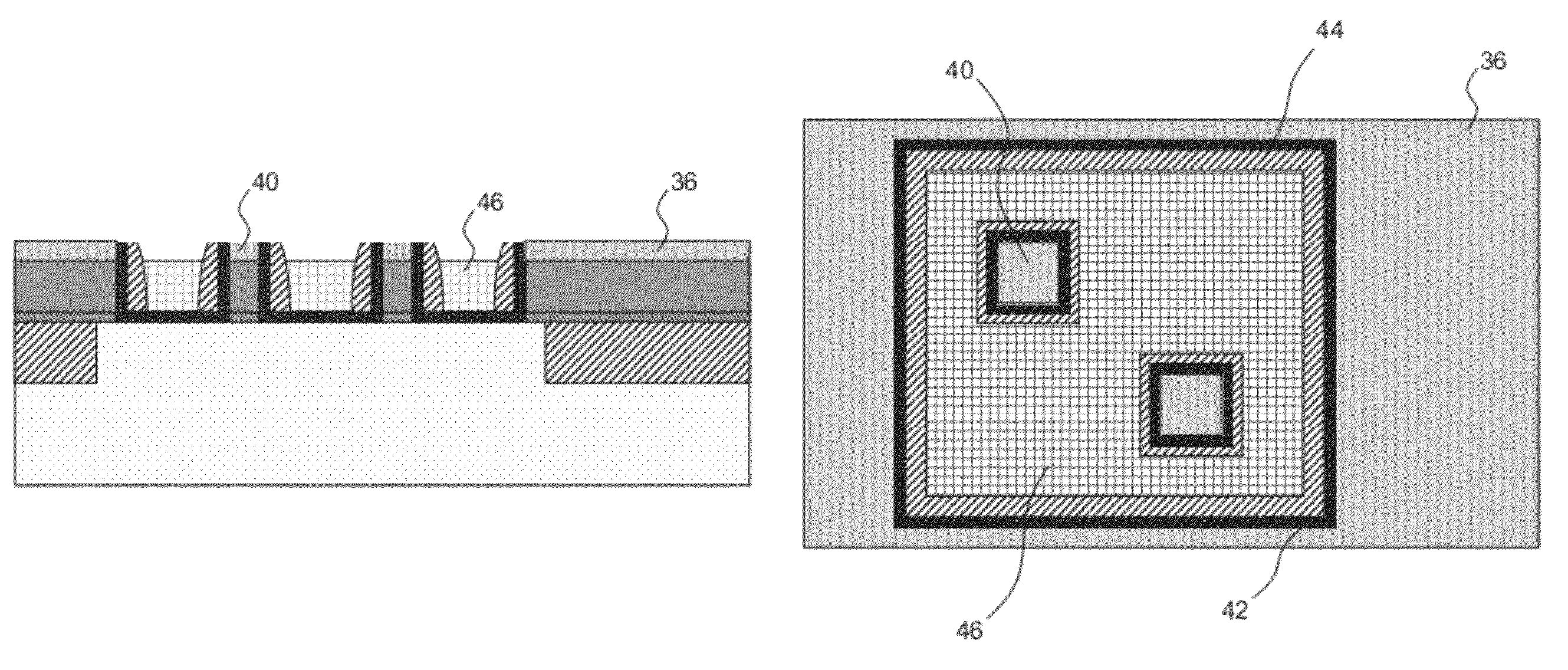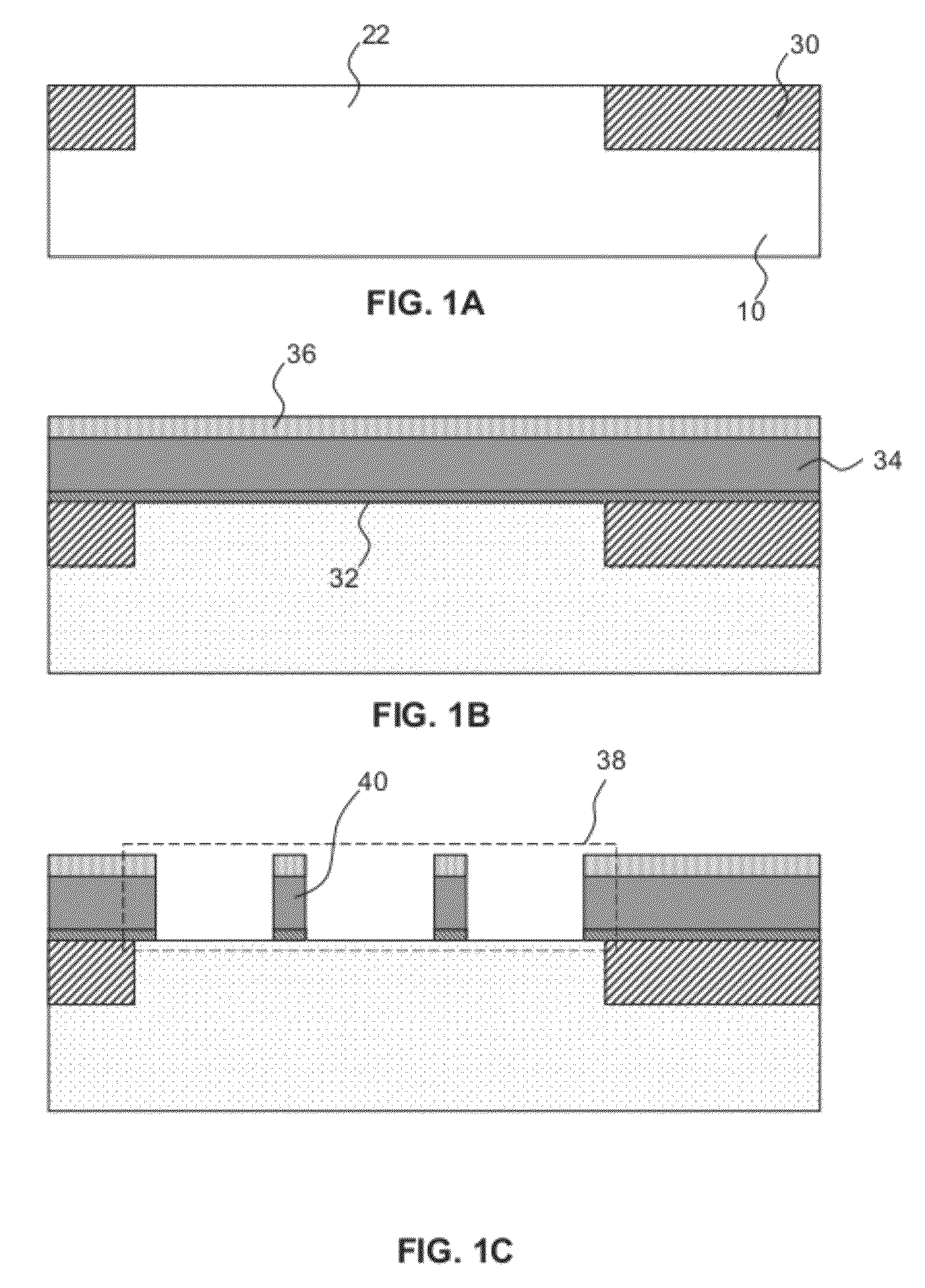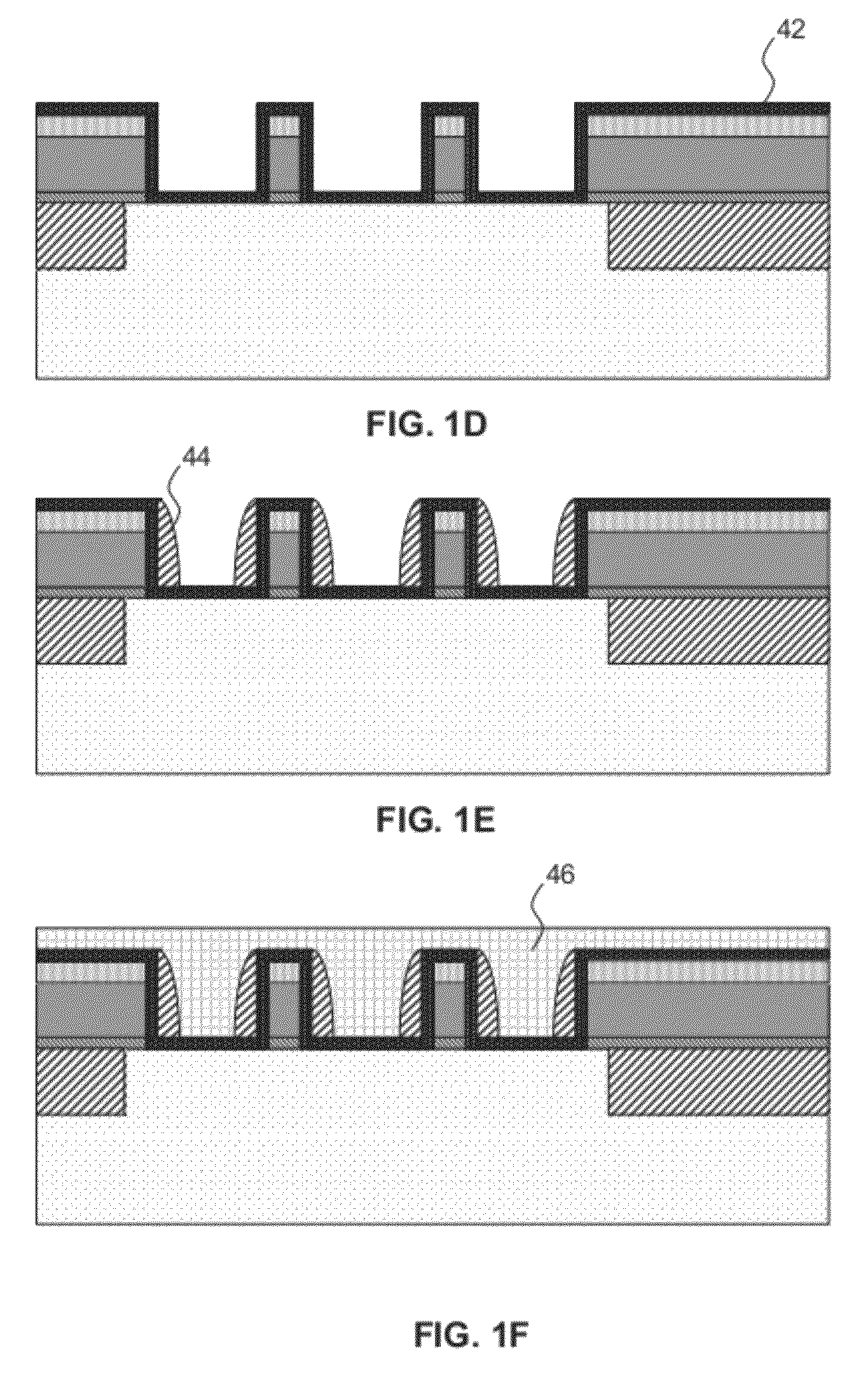Method of manufacturing a bipolar transistor and bipolar transistor
a manufacturing method and technology of bipolar transistors, applied in the direction of transistors, electrical devices, semiconductor devices, etc., can solve the problems of limiting the usefulness of cmos transistors in rf applications, reducing the efficiency of cmos transistors, so as to reduce the impact of cmos technology on transistor performance, the effect of increasing the achievable dimension and reducing the cost of manufacturing
- Summary
- Abstract
- Description
- Claims
- Application Information
AI Technical Summary
Benefits of technology
Problems solved by technology
Method used
Image
Examples
Embodiment Construction
[0021]Embodiments of the invention are described in more detail and by way of non-limiting examples with reference to the accompanying drawings, wherein
[0022]FIGS. 1A-1G schematically depicts an embodiment of the method of the present disclosure; and
[0023]FIG. 2 schematically depicts a top view of a bipolar transistor according to an embodiment of the present invention.
DETAILED DESCRIPTION OF THE DRAWINGS
[0024]It should be understood that the Figures are merely schematic and are not drawn to scale. It should also be understood that the same reference numerals are used throughout the Figures to indicate the same or similar parts.
[0025]FIGS. 1A-1G show a first embodiment of the method of the present invention. In FIG. 1A, a substrate 10 is provided in which an active region 22 is formed. The substrate 10 may be any suitable substrate, such as a silicon substrate and so on. The substrate 10 typically at some stage comprises a collector region (not shown), which may be formed in any sui...
PUM
 Login to View More
Login to View More Abstract
Description
Claims
Application Information
 Login to View More
Login to View More - R&D
- Intellectual Property
- Life Sciences
- Materials
- Tech Scout
- Unparalleled Data Quality
- Higher Quality Content
- 60% Fewer Hallucinations
Browse by: Latest US Patents, China's latest patents, Technical Efficacy Thesaurus, Application Domain, Technology Topic, Popular Technical Reports.
© 2025 PatSnap. All rights reserved.Legal|Privacy policy|Modern Slavery Act Transparency Statement|Sitemap|About US| Contact US: help@patsnap.com



